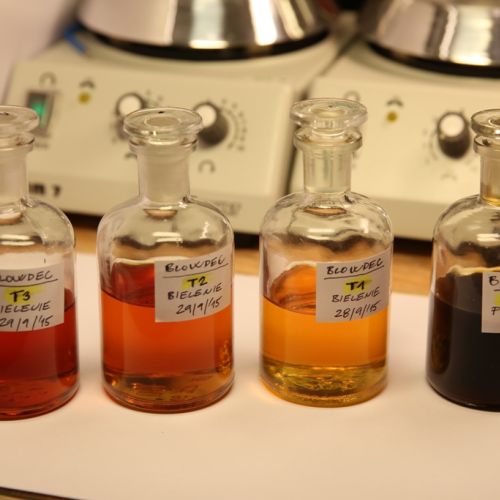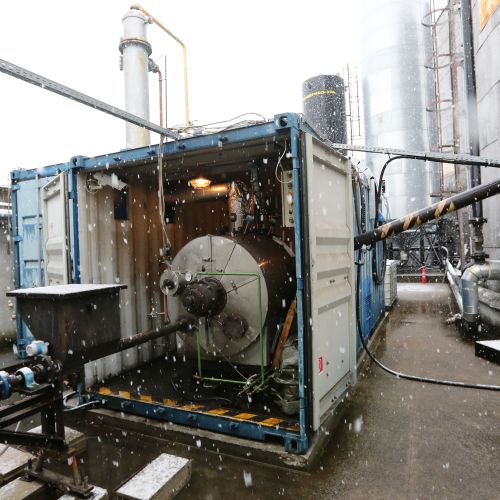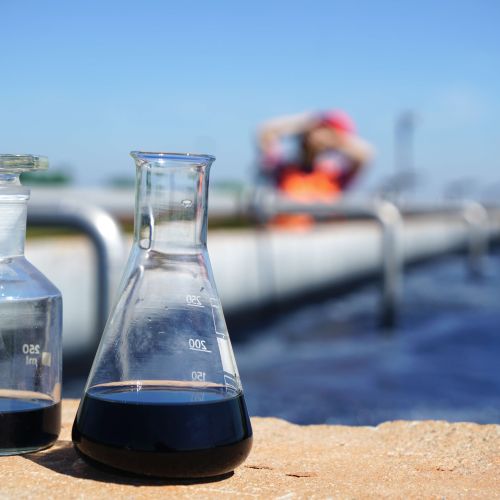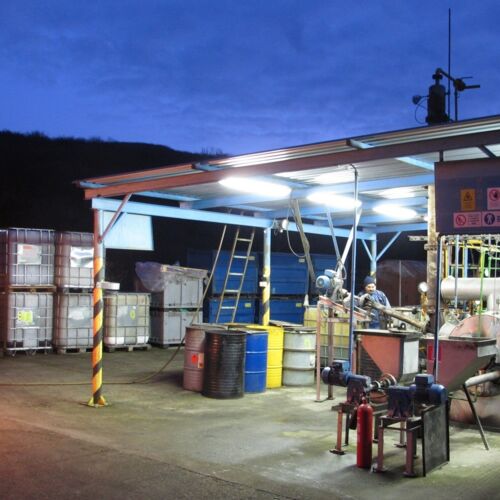- 12. February 2024
- /
- 4.5 minutes of reading

In the realm of material science, innovation often springs from the most unexpected sources. Mechanical chemistry, or Mechanochemistry, a fascinating interdisciplinary field, stands as a testament to this phenomenon. While traditional chemical reactions typically occur in solutions, mechanochemistry defies convention by leveraging mechanical force to induce chemical transformations. This groundbreaking approach has the potential to revolutionise various industries, from pharmaceuticals to nanotechnology.
Mechanochemistry, simply put, is the study of initiation of chemical reactions by mechanical force. This can involve grinding, milling, shearing, or even ultrasonic waves to initiate chemical reactions between solid-state reactants. It represents a fourth way to cause chemical reactions, complementing thermal reactions in fluids, photochemistry, and electrochemistry.
How Does Mechanochemistry Work?
The key principle behind mechanochemistry lies in breaking down the energy barriers that prevent chemical reactions from occurring. By applying mechanical force, molecules are pushed closer together, increasing their reactivity. This leads to faster reaction rates and often allows for the synthesis of novel compounds that may be difficult or impossible to obtain using traditional methods. Mechanochemical reactions can occur at room temperature and pressure, eliminating the need for high-energy inputs and toxic solvents, making them more environmentally friendly and cost-effective.
Mechanochemical reactions can be classified into various categories, including covalent bond formation, coordination chemistry, and solid-state reactions. The versatility of mechanochemistry is exemplified by its ability to facilitate a wide range of reactions, such as synthesis, polymerization, degradation, and complexation.
Mechanochemistry can be seen as an interface between chemistry and mechanical engineering. It is possible to synthesize chemical products by using only mechanical action. The mechanisms of mechanochemical transformations are often complex and different from usual thermal or photochemical mechanisms.
The method of ball milling is a widely used process in which mechanical force is used to achieve chemical processing and transformations. The special issue of Chemical Society Review (vol. 42, 2013) is dedicated to the theme of mechanochemistry.
Applications of Mechanochemistry
The applications of mechanochemistry span across numerous fields, offering solutions to longstanding challenges and opening doors to new possibilities:
- Pharmaceuticals:
Mechanochemistry has emerged as a powerful tool in pharmaceutical research and drug development. It enables the synthesis of pharmaceutical compounds with improved purity, crystallinity, and bioavailability. Additionally, mechanochemical processes can facilitate the preparation of co-crystals, polymorphs, and amorphous forms of drugs, impacting their solubility and stability.
- Materials Science:
Mechanochemistry plays a pivotal role in materials science, where precise control over material properties is crucial. It allows for the fabrication of nanostructured materials, composites, and functional materials with tailored properties. Mechanochemical techniques are employed in the synthesis of catalysts, batteries, sensors, and advanced ceramics, offering superior performance and efficiency.
- Green Chemistry:
With growing concerns about environmental sustainability, mechanochemistry has garnered attention for its eco-friendly attributes. By eliminating the need for organic solvents and reducing energy consumption, mechanochemical processes align with the principles of green chemistry. This makes them ideal for industries striving to minimise their environmental footprint and comply with regulatory standards.
- Energy Storage and Conversion:
In the quest for cleaner energy solutions, mechanochemistry holds promise for the development of next-generation energy storage devices and renewable energy technologies. Mechanochemical methods are employed in the synthesis of electrode materials for lithium-ion batteries, hydrogen storage materials, and photocatalysts for solar energy conversion, contributing to the advancement of sustainable energy systems.
- Molecular Synthesis and Catalysis:
Mechanochemistry offers unique opportunities for molecular synthesis and catalysis, enabling the rapid and efficient generation of chemical libraries and bioactive compounds. It facilitates reactions under mild conditions, expands the scope of synthetic methodologies, and provides access to previously inaccessible chemical space, driving innovation in drug discovery, agrochemicals, and fine chemicals.
Mechanochemistry in the oil industry
Mechanochemistry based on mechanical action of solids (MA) allows ultra-fast reactions between solids or solids and surrounding gaseous or liquid molecules under mechanical forces. Activation and radical mechanism cleaves covalent bonds of heavy oil by external mechanical force. This phenomena plays one of the key roles in the BlowDec® process. There are two major areas of transformation of the kinetic energy in the BlowDec reactor’s rotor. Reactor’s rotor, powered by motor, performs circular movement and mixes reactor’s content – particular solids of whirling bed and processed hydrocarbons, which are in liquid and/or solid state. Torque, which represents kinetic energy of rotor, is transferred via working parts of blades – tips to the mixed content of the reactor.

Part of the kinetic energy of blades is changed due to the friction with content to heat. Friction of surfaces of blade tips and particulate solids also activates tribochemical reactions. The other part of kinetic energy of blade tips is transferred in the form of kinetic energy to solid particles. Mutual collisions of solid particles and particles with organic molecules of heavy oil cause mechanoactivational reactions.
The simultaneous action of heat generated by friction and mechanical forces directly affecting organic molecules of processed substances results in mechanoactivation, cracking reaction of heavy oil with remarkable consequences.
Key consequences:
- Fast reaction speed - the order of seconds
- The reaction temperature being lower than thermodynamically expected
- Process running at low pressure (close to atmospheric pressure)
- High conversion
- Large depth of the composition changes of the most difficult and complex molecules of organic substances present in heavy oils and bitumen.
Mechanochemistry stands at the forefront of scientific innovation, reshaping our understanding of chemical processes and pushing the boundaries of what is achievable in material science. Its versatility, efficiency, and sustainability make it a valuable tool across diverse industries, from pharmaceuticals to renewable energy. As research in mechanochemistry continues to evolve, we can anticipate groundbreaking discoveries and transformative applications that will shape the future of technology and pave the way towards a more sustainable and prosperous world.





